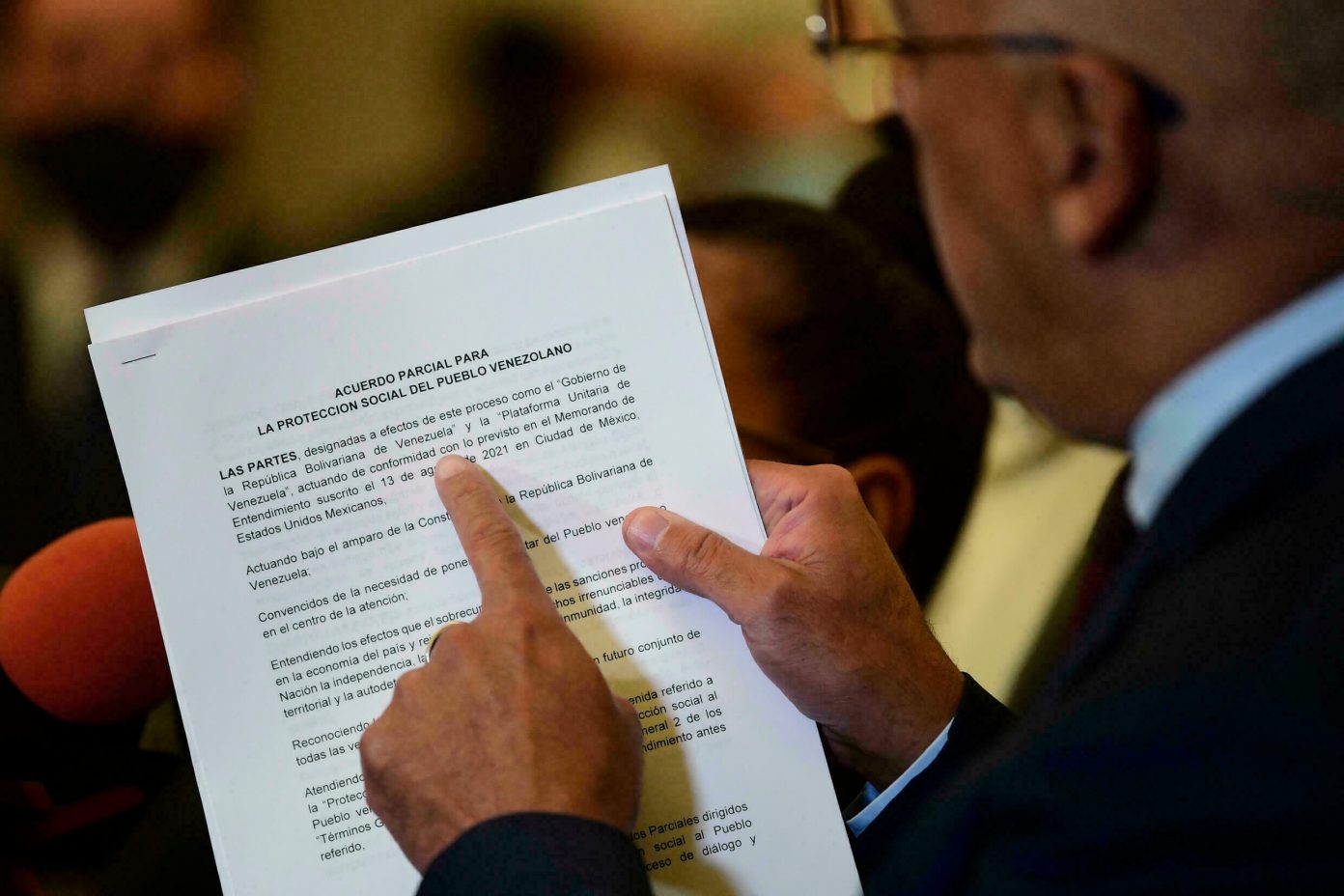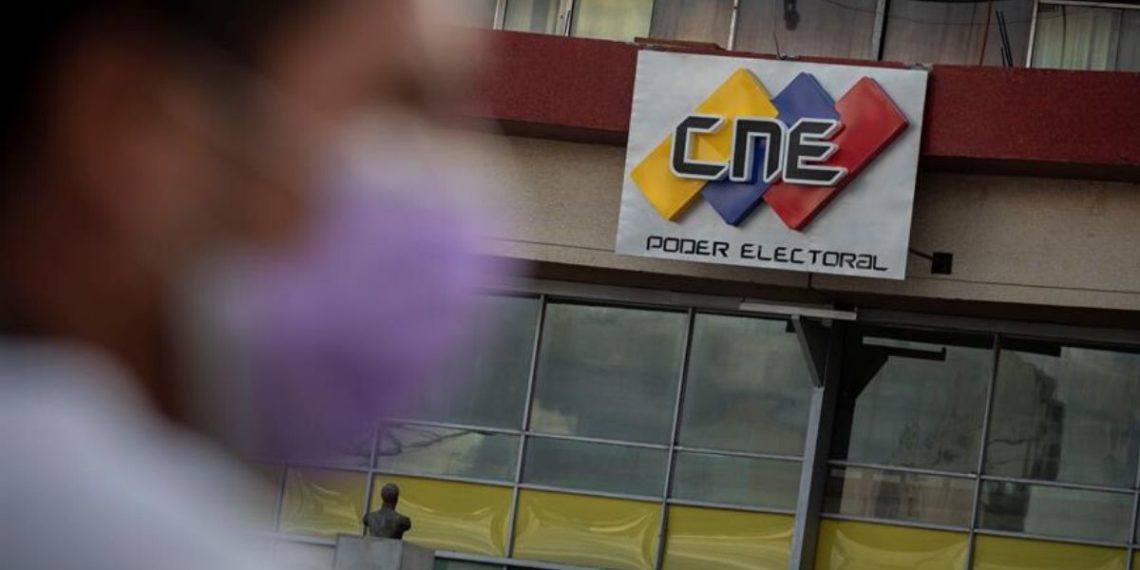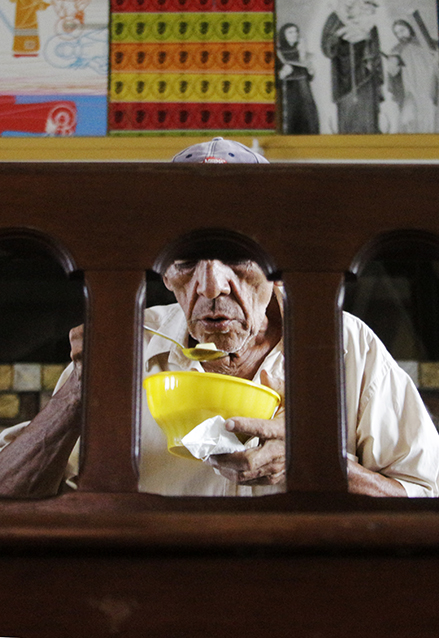The most recent National Survey of Living Conditions (ENCOVI) prepared by the Andrés Bello Catholic University (UCAB) revealed a decrease of almost 15% in multidimensional poverty, although the income gap between the poorest and the richest sectors has increased. The study revealed that education enrollment continues to decline as 1.5 million children and adolescents remain outside the school system
Less poor but more unequal and less educated. The National Survey of Living Conditions (ENCOVI 2022) affirms that, for the first time in seven years, poverty decreased in the country; however, the survey highlights the increase in the gap between the different social strata and warns that the number of students in Venezuela continues to decrease.
The research carried out by the Institute of Economic and Social Research of the Andrés Bello Catholic University (IIES-UCAB) indicates that half of the households in the country “are not poor”, which represents “a reduction of almost 15 percentage points with respect to 2021”. In summary, last year’s results had shown that 65.2% of Venezuelan households lived in poverty, dropping to 50.5% in 2022. The study employed the concept of multidimensional poverty, which is not limited to income and includes social and infrastructure factors such as education, health, housing and public services.
“We returned to the levels of multidimensional poverty of 2018, as a result of the economic recovery, but poverty due to social factors increased,” emphasized sociologist Luis Pedro España, who presented the report on November 10 together with professor Anitza Freitez, director of the IIES-UCAB.
Measured by income, the survey found poverty affects 81.5% of the population in 2022, which means that 8 of every 10 Venezuelans lack sufficient resources to pay for a basic food basket. This indicator reached 90.9% last year. Extreme poverty, which includes those with insufficient income to purchase basic food items, fell from 68% in 2021 to 53.3% in 2022.

España assured that these numbers are the result of a rebound in employment after the country overcame the paralysis of 2021 (the fuel crisis and the Covid-19 pandemic) and some restrictions were lifted amid the liberalization of the economy. “The National Executive branch did the easiest thing and what it should have done a long time ago” pointed out the sociologist, who also warned that “the economy may be doing well, but not the families. For this economic dynamism to translate into social welfare, public policies are needed. We need social programs that are very different from the ones we currently have.”
ENCOVI 2022, which was more modest in its scope (nearly 2,300 surveyed households nationwide) and thematic agenda, addressed aspects related to education, health, migration, employment, income, inequality and social programs.
A WIDENING GAP
“Venezuela is the most unequal country in the world,” commented España as he warned that the economic recovery and the positive numbers reflected in the survey have not been enough to reduce the abyss that separates the haves and the have-nots. On the contrary, he said, the differences continue to widen. The sociologist explained that the ENCOVI 2022 was based on the Gini coefficient to estimate income inequality, where 0 reflects maximum equality and 1 maximum inequality. According to the survey, the Gini coefficient for Venezuela increased in 2022 and stood at 0.603, up from 0.407 in 2014.
“Venezuela sits at the most unequal continent in the world and, by 2022, it will be the most unequal country in the Americas. Our level of inequality compares with that of Namibia, Mozambique and Angola”, said the researcher.
In terms of average income per capita, the study found that the wealthiest segment of Venezuelan society is “70 times” richer than the poorest one; In other words, The latter has an average income of US$7.90 us dollars versus US$552.20 for the former. Also, “almost 40% of households with the highest income are concentrated in Caracas, even though the capital city only accounts for 16% of the country’s households”, stressed España regarding the deepening of territorial inequality.
EMPTY CLASSROOMS, GREATER EXCLUSION
The potential demand for the educational system -in the population aged 3 to 24 years old- reaches 11,278,000 people. However, according to the study, “less than 2 in every 3 of them declared to be enrolled in the system for the 2021-2022 period.” In consequence, global coverage stood at 63%, 2 percentage points below the previous period and 10% less than in 2014, which means the worst recorded figure in the last eight years. 7,696,816 students were enrolled in the 2019-2020 period while the figure dropped to 7,051,074 in 2022, showing that 190,000 students left the school system in just one year.
“The return to in-person education has occurred under a diminished coverage in initial, primary and secondary education. The number of children and adolescents who remained outside the education system in the 2021-2022 school year is estimated at one and a half million,” said Freitez, who highlighted another finding: “Almost half of the population between the ages of 3 and 5 remains excluded from the benefits of initial education. This exclusion is concentrated among the poorest because the public system is limited and the private system is expensive”.
When delving into the phenomenon of school dropout among adolescents and young adults, the geographer indicated that “each ENCOVI has reiterated that the main reason leading adolescents to drop out of school is not the economic factor, but rather the little relevance of the offer of the education system. Young people are demanding a different offer”.
According to the study, the learning lag (which refers to the gap between the student’s age and his grade of instruction) among students aged 7 to 17 decreased due to the flexibilization of school promotion during the pandemic and “the deschooling of the pupils who had accumulated the greatest lag with respect to their educational record”. Among the school population aged 7 to 11 and 12 to 17, mild educational lag (1 year) stood at 14% and 15%, while severe educational lag (2 years and more) stood at 2% and 10%, respectively. Among those aged 7 to 11 and 12 to 17 who do not attend school, mild educational lag affects 31% and 13% of the group, while 30% and 44% show signs of severe educational lag.
“Unesco points out that when a student reaches a lag of 2 years or more he is on the brink of exclusion, and this became evident in the survey. The students with a more severe educational lag were also the ones who were left out of school,” explained Freitez, who warned that State policies to keep students in the school system are yet to be seen.
SKIN COLOR AND LIVING CONDITIONS
For the first time, ENCOVI investigated the ethnic-racial condition of the nation. According to the self-perception of skin color, 29% of the population is white, 67% mestizo and 4% black.
According to the study, multidimensional poverty affects 49.7% of whites, 55.9% of mestizos and 56.1% of blacks in the country. Regarding the coverage of the education system by racial group, the differences become more evident. For children aged 6 to 11, whites (91%), mestizos (95%) and blacks (93%) register similar numbers of enrollment, but the picture is different for those aged 12 to 17: 79% for whites, 81% for mestizos and 68% for blacks. The situation worsens in higher education (people aged 18 to 24) with enrolment reaching 25% of whites, 21% of mestizos and 10% of blacks.
“The racial differentiation in access to education becomes more evident among adolescents and young adults, in the form of a greater disadvantage among the black population, a fact related to a higher prevalence of poverty,” Freitez declared.
SOCIAL PROGRAMS
The investigation questions the effectiveness of the social programs implemented by the government of Nicolás Maduro. For example, the School Feeding Program (PAE for its acronym in Spanish) went back to the coverage level of 2019-2020 to reach 67% or 4.2 million children enrolled in school, versus the 19% who reported benefiting from the program in the 2021 edition. However, “its operation continues to be deficient, considering the targeting and frequency of the service. Among the extreme poor, more than half receive food only a few days or rarely,” the geographer noted.
In the case of the food boxes delivered by the Local Supply and Production Committees (CLAP for its acronym in Spanish), the study observed that this “quasi-universal” program reached 90% of Venezuelan households, but “only 35% of them receive it every month, which would be the most adequate frequency”, España commented.
The researcher highlighted that the money transfer program “has been re-organized and boosted”, although it also fails in targeting. “The amount of the transfers for the non-poor is 31% higher than the amount for the poor. The difference is $10 vs. $7,” he commented. Regarding the coverage of this benefit, in 2021, 62% of the population over 18 years of age received an allocation, while the figure dropped to 48.4% in 2022.
OUR NUMBERS AT HOME AND ABROAD: THE OUTLOOK OF MIGRATION
The ENCOVI 2022 estimated the population of Venezuela at 28.3 million people, as a result of the exodus of some 5 million people since 2015, the increase in deaths and a decrease in births.
Freitez explained that the population pyramid for Venezuela is similar to countries that have gone through wars, due to the loss of young people. “We lost the advantages of the demographic bonus that meant having the largest share of the population in working age, which is a factor for development. It is going to be difficult to recover the loss”, she lamented.

Regarding the number of migrants, the expert in demographics commented that the United Nations agencies recently announced that the number of refugees and migrants from Venezuela in the world has reached 7.1 million. Although the director of the IIES-UCAB welcomed the effort made by international organizations to quantify the exodus, she clarified that she does not have the necessary information to confirm that “the estimates correspond to reality.”
“My experience as a demographer warns me of the fact that this figure cannot grow indefinitely,” Freitez said. “Time passes in favor of integration processes even with the restrictions of migration regulations. We will be seeing a certain circularity of the movements”, explained the professor, who specified that this circularity could be exemplified by a Venezuelan who originally emigrated to Chile, then goes to Colombia, later returns to his native country and then leaves again for the United States
Freitez commented that, according to the report, “the need to seek employment in another country (75%) remains the main reason for emigrating, but family reunification is gaining importance.”
Regarding the legal status of Venezuelan migrants, their relatives in Venezuela reported that “2 in every 3 hold a regular status, either because they have been granted the citizenship of another country (16%), have a permanent residence permit (22%) or a temporary permit (27%). 12% of them would have an irregular status due to the lack of documents or their expiration, while in 17% of the cases the migrant’s family does not know their status”.
PLUMMETING REMITTANCES
Regarding the monetary assistance provided by migrants to their families in Venezuela, the study revealed that the percentage of those who send remittances or other types of aid to their relatives in Venezuela decreased from 59% to 49%. “57% of the remittances are sent 1 or 2 times a month, contributing to some extent to the reactivation of consumption in receiving families,” says the survey, which shows that 37% of Venezuelan migrants reduced the amount and frequency of the remittances, while 29% stopped sending any. Last year, these figures stood at 22% and 11%, respectively.
“In part, this is happening because many of the migrants are reuniting with their families abroad, which is why they have fewer people in Venezuela to whom they can send some kind of aid,” Anitza Freitez said.
The professor also pointed out that the findings of the survey suggest that the massive return of migrants to the national territory will not take place, “because Venezuela does not offer the conditions to receive the millions who settled in other countries. According to ENCOVI estimates, the proportion of returned emigrants reported by the surveyed households does not exceed 6%”.
MORE PEOPLE AT WORK, LESS FOOD INSECURITY
In the economic field, other findings of the ENCOVI 2022 reported by Luis Pedro España include the increase in the Economically Active Population, which went from 50% in 2021 to 56.2% in 2022, and the rise in formal employment, “which grew to reach 50% of the people with a job”. The majority of them (24.7%) are in the private sector and slightly less (23.2%) in the public sector. Eight years ago, the numbers were very different: 35.8% of the formal workforce was employed in the public sector and 26.2% in the private sector.
“Informal employment fell 7.77 percentage points, to stand at 44%. This figure is still well above the lowest value recorded by the survey in 2014 when it reached 36%,” said the sociologist.
According to the report, monthly wages in US dollars averaged $113.3 for public employees, $142.3 for self-employed workers, and $149.8 for workers in the private sector.
The level of economic activity in households is also contributing to the deepening of inequalities. The document explains that “in non-poor households, the level of activity is 71%, while the figure reaches just 45% in households in extreme poverty,” adding that “at least two in every three members of the household must have a job not to be considered in a situation of poverty by income.
Professor España deemed the measured fall in food insecurity positive. In 2020, only 11.8% of households responded that they were not worried about running out of food, and the figure has now risen to 21.9%. Again, the professor attributed this small progress to the liberalization of the economy, although he warned that “these improvements will stall in the absence of social policies.”
“The strategy to reduce inequality consists of producing social goods and services that increase the human and social capital of the most impoverished sectors. Left to the market, inequality will continue to be present,” he stressed.
The ENCOVI aims to produce relevant and up-to-date information on the living conditions of the population, track socioeconomic disparities and identify the main problems that violate people’s rights. The data for this edition of the survey was collected between July and August 2022 in a total of 2,218 households nationwide.
You can download the full report in Spanish HERE
Translated by José Rafael Medina




